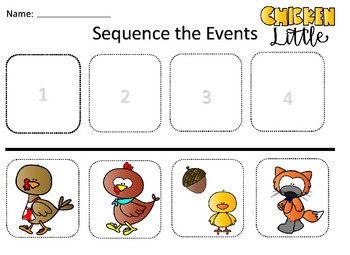

Pack it up after class and use it to make a center. Once they’ve sorted, come up with a list of characteristics of birds (they lay eggs, they have feathers, they have two feet and two wings) and of mammals (they have hair or fur, they have live babies, many have four feet, few have wings). Start with Farm Picture Cards or a list of farm animals written on sentence strips, and have students sort the cards into birds and mammals. Use the story as a starting point for sorting farm animals into birds and mammals.


Jane Wattenberg’s Henny-Penny uses updated language (“chicka-chicka-bunga” and “What’s buzzin’, Cousin?” for example) and arresting photo montages to present the story.Galdone is one of our favorites, and this book is awesome. Paul Galdone also has a version called Henny Penny.Vivian French’s Henny Penny is a bit more clever and resourceful than the usual hero of this story, and the pictures are charming.Jonathan Allen’s Chicken Licken is a lift-the-flap book, which makes it appealing for young children, as long as your group is small enough that everyone can see the flaps.Rebecca and Ed Emberley’s Chicken Little pokes fun at the original story.Steven Kellogg’s Chicken Little is recognizable as the traditional story, but of course there are some witty changes in the illustrations, especially.A warning, here - this is a version in which the birds all go into Foxy Loxy’s den and never come out again. An easy reader version with nice vintage illustrations.An online version which is no longer available explained that the story was about “atmospheric dynamics and speculative meteorology.” Nothing special about the telling of the story, but I like that explanation.It depends which version of the story you read. Sometimes they are “never seen again,” and sometimes they escape and Chicken Little learns a lesson. The birds follow the fox, who intends to eat them, and sometimes they do get eaten. All the barnyard friends go along with Chicken Little, wandering around looking for the palace, until a fox offers to show them the way. What falls on Chicken Little varies, but his reaction is always to rush around to all his friends and tell them, “The sky is falling! The sky is falling! And we must tell the king!” Actually, the words used vary quite a bit, but I like the rhythm of that version, and that is what we always use when we tell the story. “Chicken Little” is also sometimes called “Chicken Licken.” It is even sometimes called “ Henny Penny.” By any title, this is a story about a little chicken who has something fall on him (or her) and thinks that the sky is falling. But I also like it as a lead-in to disaster preparedness issues for the older ones. “Chicken Little” is a very good story for young students, with its high level of repetition and simple, cumulative story.


 0 kommentar(er)
0 kommentar(er)
